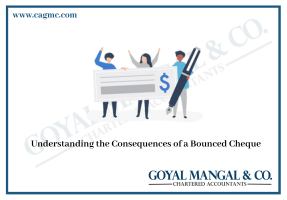 Keeping accurate records of your banking transactions can help you determine your financial health and avoid costly fees. One way to keep accurate records is to reconcile your bank account. Using this simple process each month will help you spot any discrepancies between your records and what appears on your bank statement. In this article, we will try to answer the question of How to do Bank Reconciliation?
Keeping accurate records of your banking transactions can help you determine your financial health and avoid costly fees. One way to keep accurate records is to reconcile your bank account. Using this simple process each month will help you spot any discrepancies between your records and what appears on your bank statement. In this article, we will try to answer the question of How to do Bank Reconciliation?
Reconciling your bank statement used to involve using a checkbook or pen and paper, but modern technology – apps and accounting software – have provided easier and faster ways to get the job done. No matter how you do it, reconciling your bank account can be an invaluable tool in your personal finance arsenal. Indian Banking Sector is governed by the Banking Regulation Act, of 1949 by which RBI has tried to regulate the functions of banks all over India.
|
Table of Content |
Meaning of Banking Reconciliation
Banking reconciliation refers to the process of comparing a company’s books with its bank statements to ensure that all transactions are accounted for. This process is a helpful way to keep accurate records, protect against fraudulent charges, and resolve any other discrepancies or issues. Most companies do bank reconciliation, at the end of each month, but the frequency depends largely on the size of the company and the number of transactions that occur. For example, some larger companies find it necessary to reconcile their records every day.
Bank reconciliation is an important accounting function that compares bank statements to transactions recorded in the general ledger. Creating a bank reconciliation statement can assist companies to prevent transaction or bookkeeping issues.
Reason to conduct Bank Reconciliation
There are many benefits to performing regular Bank Reconciliation. Some of these include:
- Detection of Theft and Suspicious Transactions
- Ability to track bank transactions, fines, and fees in company books.
- Keep accurate records of trade receivables and payables.
- Ability to detect issues such as missed or double payments.
The Importance of a Bank Reconciliation Statement
Bank reconciliation is important because it assists businesses in spotting potential transaction mistakes that result in a difference between accounting records and bank statements. A bank reconciliation statement also facilitates the discovery of potentially fraudulent conduct, therefore safeguarding the organization from financial loss. Bank reconciliation assures that your organization’s cash balance is precisely what you thought it was. If your book balance and bank balance disagree, your accounting team must sit down and thoroughly study both records to find the inconsistencies.
A bank reconciliation statement ensures the correctness of the bank balances shown in the passbook and cash book. The following sections explain why and how important a bank reconciliation statement is.
- The bank reconciliation statement ensures the accuracy of the balances shown in the passbook and cash book.
- The bank reconciliation statement verifies the accuracy of the entries in both books.
- The bank reconciliation statement assists in detecting and correcting problems in both books.
- The bank reconciliation statement assists in updating the cash book by discovering unrecorded entries.
- Any unjustified delay in collecting and clearing specific cheques is noted on the bank reconciliation statement.
How do Bank Reconciliation?
Following is the procedure for completing banking reconciliation:
- Obtain bank records: You will need access to a list of your transactions to reconcile your records. You can get this information through online banking, a bank statement, or by allowing your bank to share data with your accounting software.
- Gather all of your business records: You will also need access to your company’s ledger or books. Typically, this information is stored in a spreadsheet, journal, or accounting program.
- Decide where to Begin: Where you start will depend on when you last balanced your books. If you’re not sure, try to determine the last time your books matched your bank account balance and start from there.
- Review your bank’s Deposits and Withdrawals: Make sure all your bank deposits and withdrawals are accounted for on your bank statement. If an item is missing, you will need to add it.
- Review your Income and Expenses in the Accounting Software: Check your books against your bank statements and make sure every transaction is properly accounted for. If there is a mismatched item, find out why. Maybe the payment hasn’t gone through yet or you forgot you paid for something in cash.
- Check Bank Statements: There are times when a bank statement will not accurately reflect the company’s transactions. Common causes can be outstanding checks, bank errors, or deposits that are still in transit. Whatever the reason, make the necessary changes to your account statement.
- Check your Cash Balance: You will also need to adjust your records to accurately reflect all of the company’s transactions. You do this by making sure all fees and deposits are posted to the company’s cash account.
- Compare the Final Balances: Once you have matched the records and made the adjustments, you will need to confirm that the final balances are now the same and the reconciliation process should be complete. If they are still not the same, you will have to repeat the process to find the error.
Issues found during Bank Reconciliation
Following issues one can face while performing the bank reconciliation process:
- Checks that are returned after Deposit: In some cases, the bank will refuse to deposit the check. This is usually because the check draws money from a foreign bank account. If this problem occurs, you will need to reverse the entry indicating the failed deposit by crediting the cash account, decreasing the balance, and debiting the accounts receivable account.
- Canceled checks cashed by the Bank: If a check remains unpaid by the bank for an extended period of time, you will likely cancel the check and create a refund. Occasionally, however, the payee will still try to cash the original check. If the check was declared through a bank, they should refuse to cash it. If the bank has not been notified of the voided check, you will need to credit the cash account as well as debit it with an explanation of the payment.
- Double Payment: Failure to communicate with the bank about a voided check can result in a double payment. In cases where the payee cashes avoided and substitute checks, you will need to ask the payee for cashing.
- Missing and Unpaid Checks: There are usually several checks that have yet to be presented and/or cleared by the bank. For recent checks, continue to reconcile them as outstanding checks. For checks that have not been cashed for an extended period of time, you may need to make sure the check has been received by the payee and, in some cases, cancel the check and then issue a replacement.
Tips for a Successful Bank Reconciliation
Reconciling your bank accounts is a fairly quick and straightforward process, depending on the number of monthly transactions you make. It’s an important piece of the personal finance puzzle that will ensure accuracy and help you achieve your financial goals. Below are some additional tips to consider when planning to reconcile your bank accounts:
- Consider accounting software: Using accounting software can make it easier to record transactions. Many popular accounting software programs allow you to link your bank accounts, other financial accounts, and credit card accounts and import data automatically.
- Use a budget app: Budgeting apps help you create and manage monthly budgets and usually offer features for tracking spending across linked accounts. Using a budgeting app allows you to see an overview of your expenses and finances throughout the month, so you can catch any problems in real-time.
- Find your system: What works for someone else may not work for you. Find the system for tracking the banking transactions that best suit you and your situation. Try several methods and then stick with the one that allows you to keep the most accurate records.
Conclusion
Taking the time to perform bank reconciliation can help you manage your finances and keep accurate records. This relatively straightforward and quick process provides a clear picture of your financial health. Consider reconciling your bank account monthly, whether you set aside a specific day each month or do it when your statements arrive.







